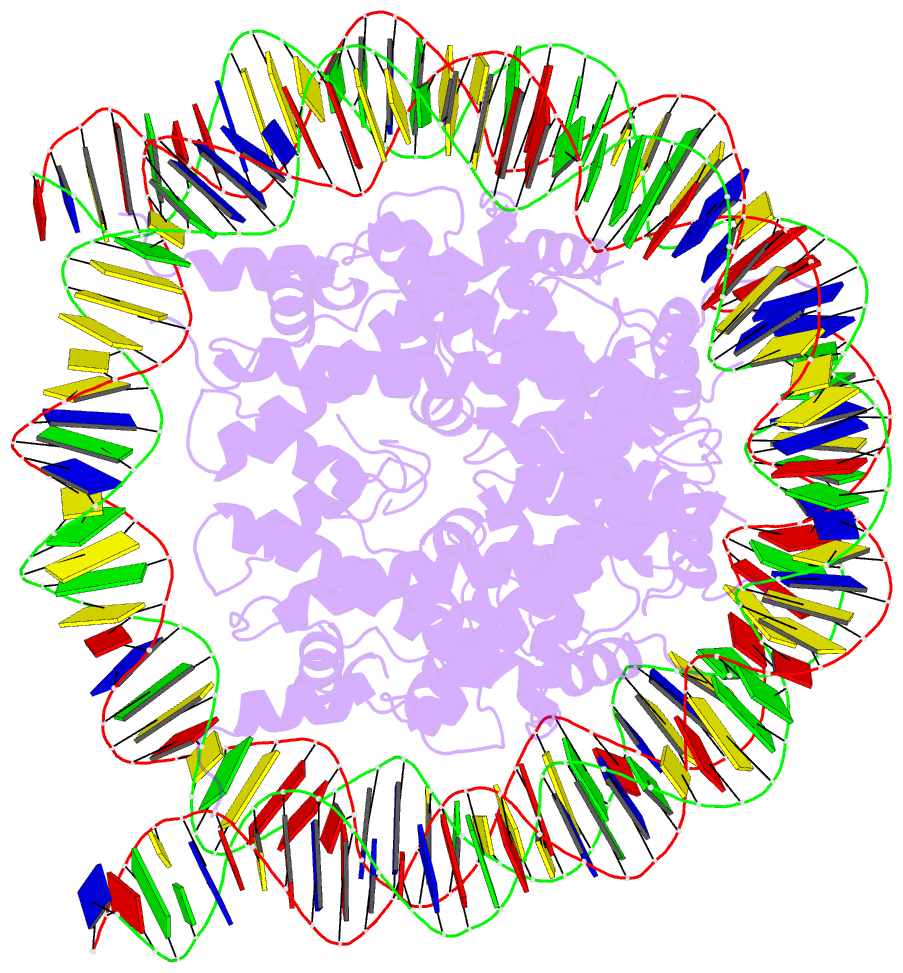Summary information and primary citation
- PDB-id
- 6see; DSSR-derived features in text and JSON formats
- Class
- nuclear protein
- Method
- cryo-EM (4.2 Å)
- Summary
- Class2a : cenp-a nucleosome in complex with cenp-c central region
- Reference
- Ali-Ahmad A, Bilokapic S, Schafer IB, Halic M, Sekulic N (2019): "CENP-C unwraps the human CENP-A nucleosome through the H2A C-terminal tail." Embo Rep., 20, e48913. doi: 10.15252/embr.201948913.
- Abstract
- Centromeres are defined epigenetically by nucleosomes containing the histone H3 variant CENP-A, upon which the constitutive centromere-associated network of proteins (CCAN) is built. CENP-C is considered to be a central organizer of the CCAN. We provide new molecular insights into the structure of human CENP-A nucleosomes, in isolation and in complex with the CENP-C central region (CENP-CCR ), the main CENP-A binding module of human CENP-C. We establish that the short αN helix of CENP-A promotes DNA flexibility at the nucleosome ends, independently of the sequence it wraps. Furthermore, we show that, in vitro, two regions of human CENP-C (CENP-CCR and CENP-Cmotif ) both bind exclusively to the CENP-A nucleosome. We find CENP-CCR to bind with high affinity due to an extended hydrophobic area made up of CENP-AV532 and CENP-AV533 . Importantly, we identify two key conformational changes within the CENP-A nucleosome upon CENP-C binding. First, the loose DNA wrapping of CENP-A nucleosomes is further exacerbated, through destabilization of the H2A C-terminal tail. Second, CENP-CCR rigidifies the N-terminal tail of H4 in the conformation favoring H4K20 monomethylation, essential for a functional centromere.





